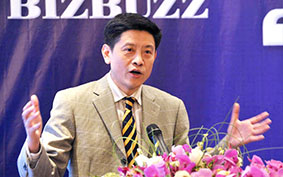Import expo aligns Chinese market and global trade
 The First China International Import Expo (CIIE) that concluded on Nov. 10 has recently taken the world spotlight. This raises some questions for reflection: What are the key issues of today’s global economic and trade development? In what context do we talk about the global economic and trade issues? What contributions can China make to help resolve these issues?
The First China International Import Expo (CIIE) that concluded on Nov. 10 has recently taken the world spotlight. This raises some questions for reflection: What are the key issues of today’s global economic and trade development? In what context do we talk about the global economic and trade issues? What contributions can China make to help resolve these issues?
From the perspective of regional structure, Asia and the Commonwealth of Independent States (CIS) both overtook other global regions in 2017 with their trade volume growth rates at 8.1 percent and 7.8 percent, respectively. The rates for North America and Europe were 4.1 percent and 3 percent, lower than the global average level. Central and South America and Africa hovered around 3.5 percent and 3.1 percent, while growth fell by 2.2 percent in the Middle East.
At the same time, unilateral import and export power does not exist today. The trade volume of China, the United States, Germany, Japan and the Netherlands, altogether, account for 38 percent of the total global trade, which indicates an obvious increased degree of concentration in the pattern of global trade. The major countries, while leading global trade, also play the role of providing products and markets.
In recent years, China has played a positive and guiding role in global trade. This is not only attributed to the fact that China is the world’s largest exporter and second largest importer. More importantly, from the perspective of a single country’s trade share, China’s commodity’s export volume currently accounts for 13.2 percent of the global total, which surpasses America’s 9 percent and Germany’s 8.4 percent. In terms of imports, China’s ratio in the global total improved from 5.4 percent in 2003 to 10.5 percent in 2017, second only to that of the US at 13.7 percent.
Taking the numbers in 2012 as the base, among the top five leading trade powers—China, the United States, Germany, Japan and the Netherlands—only the trade volumes of China, the United States and Germany grew. Therefore, China’s foreign trade growth undoubtedly has a positive effect on fostering global trade.
First, the import expo can expand the size of the global trade market and tap China’s consumption potential. According to a forecast by China’s Ministry of Commerce, the country’s imports over the coming five years will reach as high as US $8 trillion, which accounts for nearly half of the current global total commodity trade volume. Regarding consumption potential, China has cultivated a middle-income group of around 400 million people through the 40 years of reform and opening up, which endows China with the ability to expand global trade by further opening up its market. The import expo, as the world’s only special import-themed exposition, will act as a window and bridge connecting China’s domestic market with global commodities, services and investment.
In addition, the expo is conducive to enhancing China’s trade mechanism, fostering the institutional system and capacity building of opening up. The import expo is not merely an event for foreign affairs, commerce and trade hosted by China. A “6+365” transaction service platform was designed for the expo (note: the platform offers all-year-long online and off-line service for the exhibitors and purchasers from both home and abroad in addition to the six-day on-site exhibition). Such long-term foreign trade activities, improving the trade facilitation mechanism based on global-scale e-commerce, will provide steady market demand and institutional dividends for global trade.
The import expo signals China’s opening its market to the globe. As one of the world’s largest trade surplus countries, China sometimes incurs reproach and misjudgment from some trade deficit countries. The expo, demonstrating the organic connection between China’s development and the world’s development, is the country’s solemn commitment to further promoting the openness, communication and integration of the global economy.
Yu Nanping is a professor from the Institute of International Relations and Regional Development at East China Normal University.
(edited by BAI LE)
